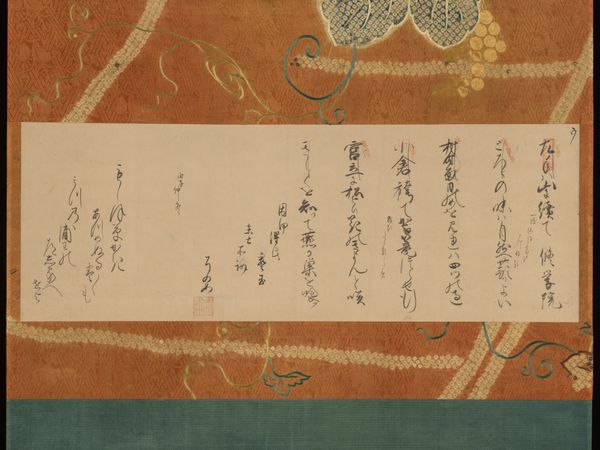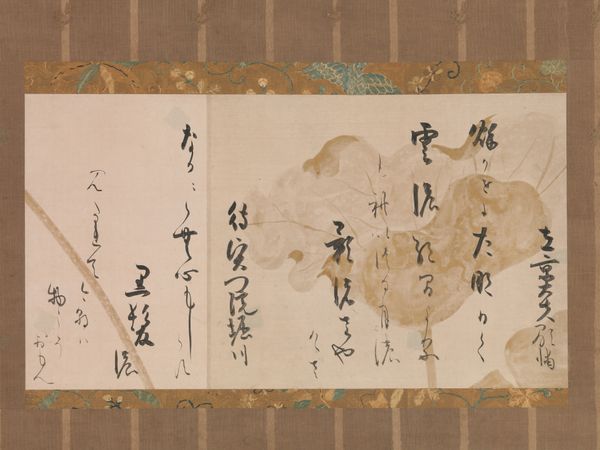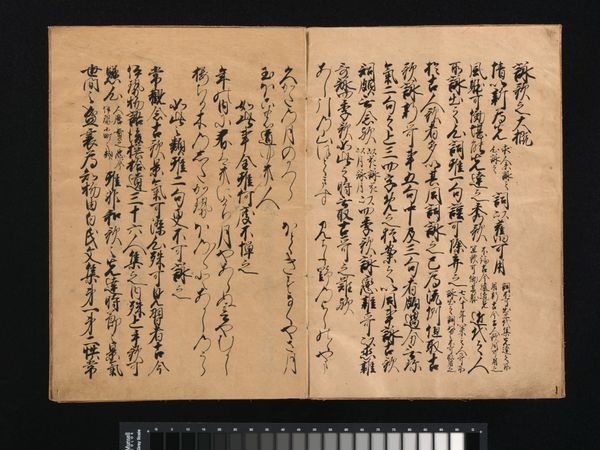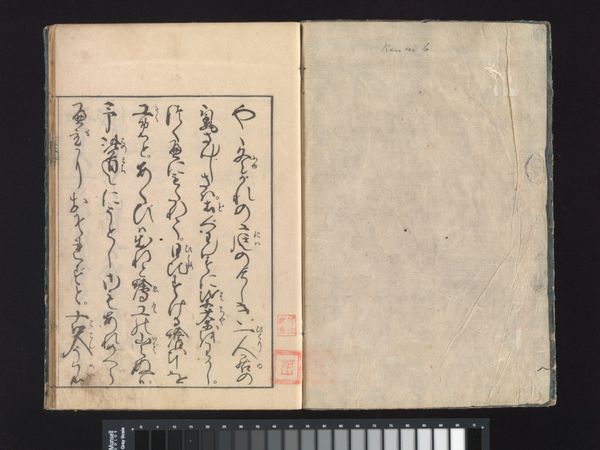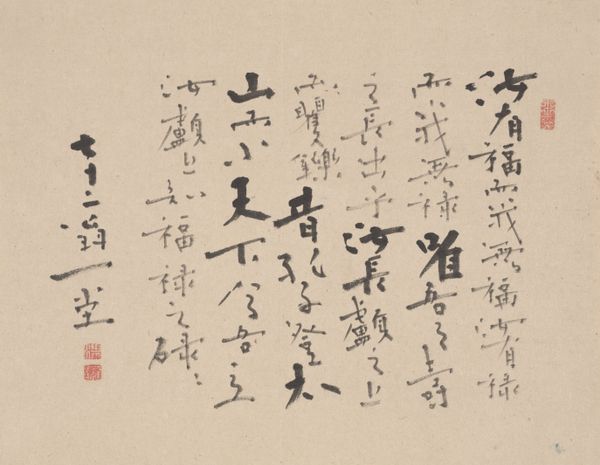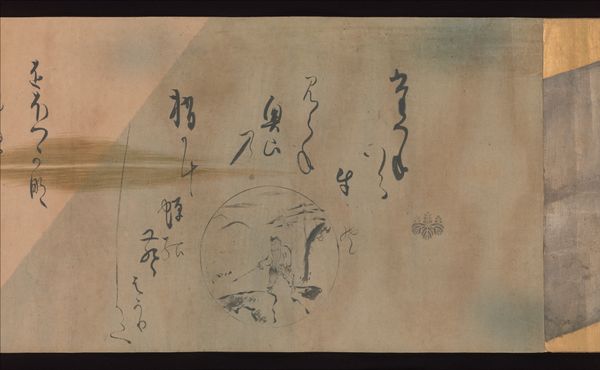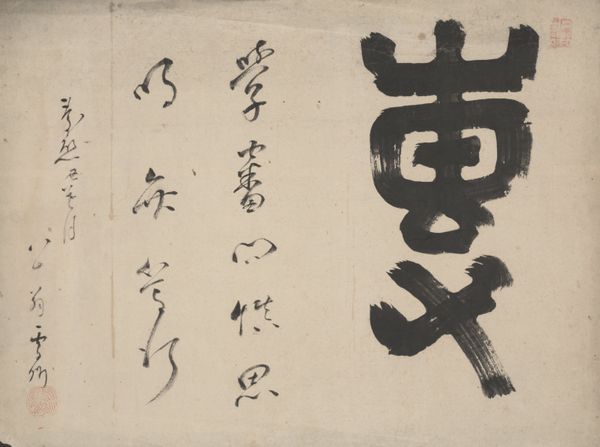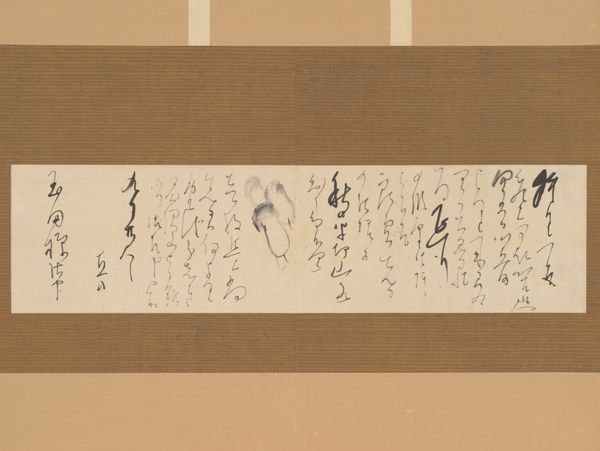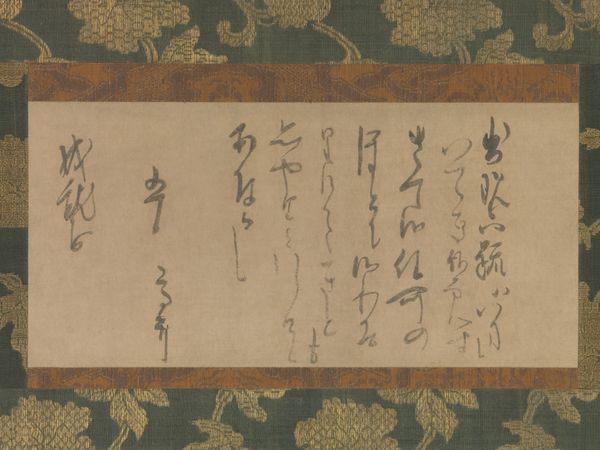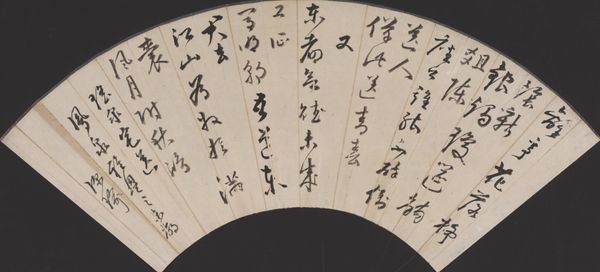
Two Kyōka (Playful Thirty-One- Syllable Verse) 1819
0:00
0:00
paper, ink
#
linocut
#
asian-art
#
japan
#
paper
#
ink
#
linocut print
#
watercolor
#
calligraphy
Dimensions: Image: 9 1/16 × 26 1/4 in. (23 × 66.7 cm) Overall with mounting: 44 7/8 × 27 7/8 in. (114 × 70.8 cm) Overall with knobs: 44 7/8 × 29 7/8 in. (114 × 75.9 cm)
Copyright: Public Domain
This hanging scroll features two kyōka, playful thirty-one-syllable verses, brushed with ink on paper by Shokusanjin, also known as Ōta Nanpo, in the late 18th or early 19th century. The elegant calligraphy itself is the dominant visual symbol here, each stroke imbued with cultural significance. Consider the act of writing in East Asian traditions. It transcends mere communication; it is a performance, a dance of the hand that carries centuries of philosophical and aesthetic weight. The characters, seemingly simple, echo the profound connection between humans and nature, a concept deeply rooted in Shinto and Buddhist beliefs. Calligraphy, like the written word in many cultures, is a powerful force engaging viewers on a subconscious level. The flowing lines evoke emotions and psychological states, acting as a mirror reflecting the collective memory and subconscious processes of both artist and viewer. The non-linear, cyclical progression of the symbols resurfaces, evolves, and takes on new meanings in different historical contexts.
Comments
No comments
Be the first to comment and join the conversation on the ultimate creative platform.

